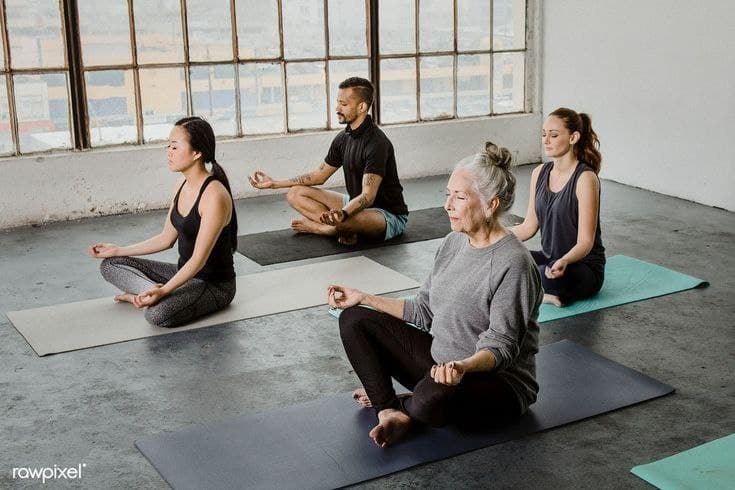Meditation can be defined as a set of techniques that are intended to encourage a heightened state of awareness and focused attention. Meditation is also a consciousness-changing technique that has been shown to have a wide number of benefits on psychological well-being. Meditation has been practiced in cultures all over the world for thousands of years.
Nearly every religion, including Buddhism, Hinduism, Christianity, Judaism, and Islam, has a tradition of using meditative practices. While meditation is often used for religious purposes, many people practice it independently of any religious or spiritual beliefs or practices. Meditation can also be used as a psychotherapeutic technique.
Research has shown that meditation can have both physiological and psychological effects. Some of the positive physiological effects include a lowered state of physical arousal, reduced respiration rate, decreased heart rate, changes in brain wave patterns, and lowered stress.
Some of the other psychological, emotional, and health-related benefits of meditation include better management of symptoms related to anxiety disorders, depression, sleep disorders, pain issues, and high blood pressure, better stress management skills, changes in different aspects of attention and mindfulness, increased self-awareness, improved emotional well-being, improved working memory and fluid intelligence, improved immunity, headache relief, etc.
There are many different types of meditation. Not all meditation styles are right for everyone. These practices require different skills and mindsets.
1. Mindfulness meditation
Mindfulness meditation originates from Buddhist teachings and is the most popular and researched form of meditation in the West.
In mindfulness meditation, you pay attention to your thoughts as they pass through your mind. You don’t judge the thoughts or become involved with them. You simply observe and take note of any patterns.
This practice combines concentration with awareness. You may find it helpful to focus on an object or your breath while you observe any bodily sensations, thoughts, or feelings.
This type of meditation is good for people who don’t have a teacher to guide them, as it can be easily practiced alone.
2. Spiritual meditation
Spiritual meditation is used in nearly all religions and spiritual traditions.
The types of spiritual meditation are as diverse as the world’s spiritual traditions themselves. Spiritual meditation focuses on developing a deeper understanding of spiritual/religious meaning and connection with a higher power.
Spiritual meditation can be practiced at home or in a place of worship. This practice is beneficial for those who seek spiritual growth and a deeper connection to a higher power or spiritual force.
3. Focused meditation
Focused meditation involves concentration using any of the five senses and involves focusing all of your attention on a specific thing while tuning out everything else around you. The goal is to really experience whatever you are focusing on, whether it’s your breath, a specific word, or a mantra to reach a higher state of being.
This practice may be simple in theory, but it can be difficult for beginners to hold their focus for longer than a few minutes at first.
As the name suggests, this practice is ideal for anyone who wants to sharpen their focus and attention.
4. Movement meditation
Although most people think of yoga when they hear movement meditation, this practice may include walking, gardening, and other gentle forms of movement.
This is an active form of meditation where the movement guides you into a deeper connection with your body and the present moment.
Movement meditation is good for people who find peace in action and want to develop body awareness.
5. Mantra meditation
Mantra meditation is prominent in many teachings, including Hindu and Buddhist traditions. This type of meditation uses a repetitive sound to clear the mind. It can be a word, phrase, or sound, one of the most common beings “om.”
Your mantra can be spoken loudly or quietly. After chanting the mantra for some time, you’ll be more alert and in tune with your environment. This allows you to experience deeper levels of awareness.
Some people enjoy mantra meditation because they find it easier to focus on a word than on their breath. Others enjoy feeling the vibration of the sound in their body.
This is also a good practice for people who don’t like silence and enjoy repetition.
6. Transcendental Meditation
Transcendental Meditation (TM) is a type of meditation that’s been the subject of numerous studies in the scientific community.
TM was founded by Maharishi Mahesh Yogi and refers to a specific practice designed to quiet the mind and induce a state of calm and peace. It involves the use of mantras and is best taught by a certified TM practitioner.
This practice is for those who want an accessible approach to the depth that meditation offers.
7. Progressive relaxation
Also known as body scan meditation, progressive relaxation is a practice aimed at reducing tension in the body and promoting relaxation.
Oftentimes, this form of meditation involves slowly tightening and relaxing one muscle group at a time throughout the body.
In some cases, it may also encourage you to imagine a gentle wave flowing through your body to help release any tension.
This form of meditation is often used to relieve stress and unwind before bedtime.
8. Loving-kindness meditation
Loving-kindness meditation is used to strengthen feelings of compassion, kindness, and acceptance toward oneself and others.
It typically involves opening the mind to receive love from others and then sending well wishes to loved ones, friends, acquaintances, and all living beings.
Because this type of meditation is intended to promote compassion and kindness, it may be ideal for those holding feelings of anger or resentment.
9. Visualization meditation
Visualization meditation is a technique focused on enhancing feelings of relaxation, peace, and calmness by visualizing positive scenes, images, or figures.
This practice involves imagining a scene vividly and using all five senses to add as much detail as possible. It can also involve holding a beloved or honored figure in mind to embody their qualities.
Another form of visualization meditation involves imagining yourself succeeding at specific goals, which is intended to increase focus and motivation.
Many people use visualization meditation to boost their mood, reduce stress levels, and promote inner peace.
While there are many different forms of meditation and ways to practice, learning a basic meditation for beginners is a great place to begin:
- Choose a quiet spot that is free of distractions. Turn off your phone, television, and other distractions. If you choose to play quiet music, select something calm and repetitive.
- Set a time limit. If you are just getting started, you might want to stick to shorter sessions of about 5 to 10 minutes in length.
- Pay attention to your body and get comfortable. You can sit cross-legged on the floor or in a chair as long as you feel that you can sit comfortably for several minutes at a time.
- Focus on your breathing. Try taking deep breaths that expand your belly and then slowly exhale. Pay attention to how each breath feels.
- Notice your thoughts. The purpose of meditation is not to clear your mind—your mind is inevitably going to wander. Instead, focus on gently bringing your attention back to your breath whenever you notice your thoughts drifting. Don’t judge your thoughts or try to analyze them; simply direct your mind back to your deep breathing.
In the following articles, we will tell you more about meditation tips. Be aware that if meditation causes tension and stress in you, stop practicing and see a therapist.

